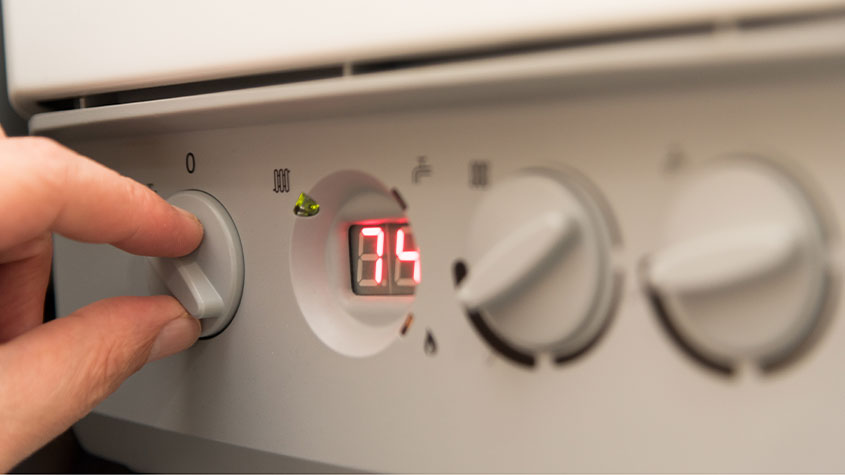Two boiler tricks to slash hundreds off your energy bill
As temperatures drop, you may have tried a few tricks to help keep energy bills low, but could these two boiler tricks slash hundreds off your costs?


As the cold snaps kicks in, energy bills are at the forefront of our minds again as we try to keep energy bills low.
Currently, household bills are somewhat protected with the government’s Energy Price Guarantee (EPG), under which the typical average household pays around £2,500 - but this is expected to rise to £3,000 in April. The increase coincides with the end of the government’s £400 energy grant, so households will be feeling added pressure from higher bills on top of rising inflation.
Given the uncertainty around energy prices in 2023, cutting costs now makes sense.
MoneyWeek
Subscribe to MoneyWeek today and get your first six magazine issues absolutely FREE

Sign up to Money Morning
Don't miss the latest investment and personal finances news, market analysis, plus money-saving tips with our free twice-daily newsletter
Don't miss the latest investment and personal finances news, market analysis, plus money-saving tips with our free twice-daily newsletter
And to help you, experts say these two simple boiler changes could save you up to £25 a month on your energy bill. Here’s what you need to know.
1. Turn off your boiler’s preheat function
When the preheat function of your boiler is on, hot water is ready to go at all times – even when you’re not using it.
By turning this function off you’ll have to wait a couple of minutes for the water to heat up, but it will shave anywhere between 5% to 10% off your energy bill.
2. Turn down your flow temperature
Combi boilers in the UK are typically set to around 80C, but this isn’t necessarily the most efficient temperature for a boiler to operate at, according to boiler experts.
Lowering your boiler’s flow temperature will regulate the water temperature when it goes from your boiler to your radiator. A lot of heat escapes into the air during this process, so experts recommend you keep your flow temperature low, as this means less heat is lost as the boiler recycles the majority of the heat back into the water to heat it up.
However this option is only available to those with a condensing combi boiler that is not connected to a hot water cylinder, where your hot water is stored. Experts say this tip could save people anywhere between 6% and 8% off their gas bills, and some could see their bills reduced by nearly £100.
To safely turn your boiler’s flow temperature down, have a look at your boiler manual. If you’ve lost it you can type your boiler model into a search engine to get a PDF copy. The lower the temperature, the more efficient your boiler will be.
It’s worth keeping in mind that turning your flow temperature down will mean your house will take a little longer to heat up, but you will be making savings on your energy bills.
A number of energy suppliers are recommending this move for households, including Octopus Energy. Octopus Energy said this is a little-known, but very effective tip for saving gas whilst staying warm. Its customers have reported saving over £100 on their bills.
There are further savings to be made if you have an Economy 7 meter.
Troubleshooting the most common boiler problems
If you’ve decided to turn your boiler on but find it’s not working, don’t panic. “Some problems require professional assistance,” says Ben Gallizzi, boiler expert at Uswitch.
“Others can be fixed by consulting your manufacturer’s manual. Here are some tips from our guide on how to troubleshoot common boiler problems.”
- Check your manual – this is the first step to resolving an issue. Check the error code displayed on your boiler to identify the issue you need to be targeting.
- Check your pipes – frozen outdoor pipes can prevent water from reaching the boiler. If your condensate pipe is frozen, heat the area with warm (not boiling) water, a hairdryer, or an electric blanket.
- Check your thermostat – Make sure your thermostat isn’t disconnected from the boiler, and nudge it up a few degrees to kickstart it. Check any switches to make sure they haven’t been knocked out of place. You could also reset the thermostat if the problem persists.
- Check your boiler pressure – Your boiler won’t run efficiently if the pressure is too high or too low. Check your pressure gauge, and if there’s an issue follow your boiler instruction manual to repressurise the system.
Get the latest financial news, insights and expert analysis from our award-winning MoneyWeek team, to help you understand what really matters when it comes to your finances.
Nic studied for a BA in journalism at Cardiff University, and has an MA in magazine journalism from City University. She has previously worked for MoneyWeek.
-
 Investors will reap long-term rewards from UK equities
Investors will reap long-term rewards from UK equitiesOpinion Nick Train, portfolio manager, Finsbury Growth & Income Trust, highlights three UK equities where he’d put his money
-
 The graphene revolution is progressing slowly but surely
The graphene revolution is progressing slowly but surelyEnthusiasts thought the discovery that graphene, a form of carbon, could be extracted from graphite would change the world. They might've been early, not wrong.
-
 Act now to bag NatWest-owned Ulster Bank's 5.2% easy access savings account
Act now to bag NatWest-owned Ulster Bank's 5.2% easy access savings accountUlster Bank is offering savers the chance to earn 5.2% on their cash savings, but you need to act fast as easy access rates are falling. We have all the details
-
 Moneybox raises market-leading cash ISA to 5%
Moneybox raises market-leading cash ISA to 5%Savings and investing app MoneyBox has boosted the rate on its cash ISA again, hiking it from 4.75% to 5% making it one of top rates. We have all the details.
-
 October NS&I Premium Bonds winners - check now to see what you won
October NS&I Premium Bonds winners - check now to see what you wonNS&I Premium Bonds holders can check now to see if they have won a prize this month. We explain how to check your premium bonds
-
 The best packaged bank accounts
The best packaged bank accountsAdvice Packaged bank accounts can offer great value with useful additional perks – but get it wrong and you could be out of pocket
-
 Bank of Baroda closes doors to UK retail banking
Bank of Baroda closes doors to UK retail bankingAfter almost 70 years of operating in the UK, one of India’s largest bank is shutting up shop in the UK retail banking market. We explain everything you need to know if you have savings or a current account with Bank of Baroda
-
 How to earn cashback on spending
How to earn cashback on spendingFrom credit cards and current accounts to cashback websites, there are plenty of ways to earn cashback on the money you spend
-
 John Lewis mulls buy now, pay later scheme
John Lewis mulls buy now, pay later schemeThe CEO of John Lewis has said the retailer will consider introducing buy now, pay later initiatives for lower-priced items.
-
 State pension triple lock at risk as cost balloons
State pension triple lock at risk as cost balloonsThe cost of the state pension triple lock could be far higher than expected due to record wage growth. Will the government keep the policy in place in 2024?
